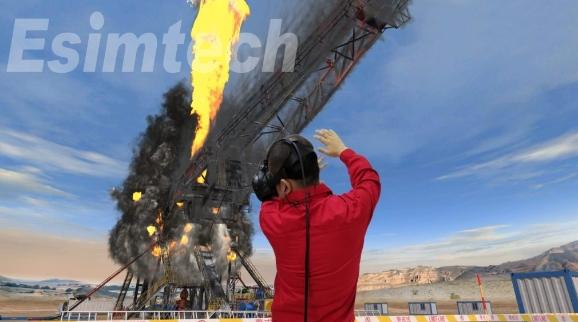In the high-stakes world of oil and gas, safety is paramount. Each day, thousands of workers around the globe face hazardous conditions that demand rigorous training and preparation. However, with a diverse global workforce, language barriers can pose significant challenges to effective safety training. Traditional methods often struggle to bridge this gap, leaving room for misunderstanding and potentially dangerous situations. Enter Virtual Reality (VR) training, a cutting-edge solution revolutionizing safety education in the oil and gas industry.
The Language Challenge
Oil and gas operations span across continents, drawing in workers from diverse linguistic backgrounds. In such an environment, clear communication is not just important—it's a matter of life and death. Traditional safety training materials, often delivered in written or spoken form, may not effectively convey crucial information to non-native speakers. This can lead to misunderstandings, errors, and, ultimately, safety hazards.
Enter VR Training
VR technology offers a powerful alternative. By immersing trainees in realistic, interactive environments, VR training transcends language barriers. Instead of relying solely on words, trainees can visualize and experience safety protocols firsthand. Whether navigating a virtual oil rig or responding to a simulated emergency, participants gain practical skills in a language-neutral space.
Advantages of VR Training
Immersive Learning: VR simulates real-world scenarios, allowing trainees to practice safety procedures in a realistic environment. This immersive experience enhances comprehension and retention, irrespective of language proficiency.
Interactive Engagement: Unlike traditional training methods, VR encourages active participation. Trainees can interact with equipment, respond to emergencies, and make decisions—all within a virtual setting. This hands-on approach fosters engagement and enhances learning outcomes.
Adaptability: VR training modules can be customized to accommodate different languages and cultural contexts. By tailoring content to the needs of diverse audiences, organizations can ensure that safety messages resonate effectively across linguistic boundaries.
Scalability: With VR, organizations can deliver consistent training experiences to a global workforce. Whether employees are based in Texas or Tokyo, VR platforms offer a standardized approach to safety education, reducing disparities in training quality.
Case Study: VR in Oil & Gas Safety Training
Consider a multinational oil company with operations in Latin America, Asia, and the Middle East. Traditionally, safety training materials were provided in English, posing challenges for non-English-speaking employees. To address this issue, the company implemented VR training modules tailored to local languages and cultural norms.
In Brazil, for example, VR simulations were developed in Portuguese, featuring scenarios relevant to offshore drilling platforms in the Campos Basin. Similarly, in the United Arab Emirates, Arabic-speaking employees engaged in VR training sessions focused on desert drilling operations.
The results were striking. Employee feedback indicated a significant improvement in comprehension and confidence following VR training. Incidents and near misses decreased, demonstrating the efficacy of language-neutral VR solutions in enhancing safety culture.
Overcoming Challenges
While VR training offers immense potential, challenges remain. Technical limitations, cost considerations, and cultural nuances must be carefully navigated to ensure successful implementation. Moreover, ongoing evaluation and refinement are essential to optimize training effectiveness and address evolving needs.
Conclusion
In the oil and gas industry, where safety is non-negotiable, overcoming language barriers is paramount. VR training represents a groundbreaking solution, enabling organizations to deliver immersive, language-neutral safety education to a global workforce. By harnessing the power of VR technology, companies can enhance comprehension, engagement, and ultimately, save lives on the front lines of energy production.
